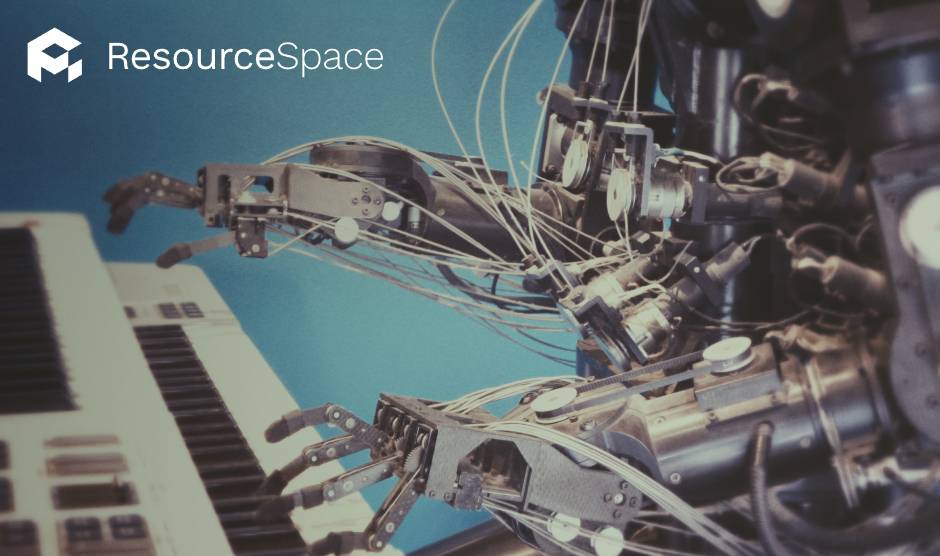
ResourceSpace has changed the way the DEC uses content, making it much easier for us to quickly make assets available both internally and externally during our emergency appeals.
Blog
22nd September 2023

It’s not even 12 months since the initial release of ChatGPT in November 2022, but in that time OpenAI’s flagship AI software has taken the world by storm.
GPT stands for Generative Pre-trained Transformer, a type of large language model (LLM), and the software has been doing a pretty good job of appearing to be a genuine AI. ChatGPT responds to questions and can converse in a way a human might, but this form of machine learning is simply trained on how to respond to prompts based on large data sets of unlabelled text, while continuing to ‘learn’ with every subsequent interaction with a user - a process called reinforced learning from human feedback (RLHF).
There are significant limitations with AI-generated content in its present form, with ChatGPT found to sometimes simply make up information, while AI-generated images are still prone to erroneous elements that don’t look right on closer inspection (although this is improving rapidly).
However, aside from the quality issues, there are significant legal questions to be resolved when it comes to AI content, particularly around consent and copyright.
If you’ve ever used ChatGPT or any of the AI image generators such as Midjourney, you might be wondering why copyright and consent are issues. After all, you enter a prompt and a seemingly unique text response or image is generated.
However, LLMs and image generators are trained using the work of humans. Midjourney doesn’t create art in response to specific prompts based on a unique artistic interpretation, but by analysing the millions of data points it has been exposed to and recreating something that appears to be new.
In December 2022, Ammaar Reeshi used Midjourney to create the images for an AI-generated children’s book titled Alice and Sparkle. Reeshi spent hours revising prompts entered into Midjourney, but this drew criticism that the work of human artists was being used without any credit or compensation:
“The main problem to me about AI is that it was trained off of artists’ work,” said Adriane Tsai, a children’s book illustrator.
“It’s our creations, our distinct styles that we created, that we did not consent to being used.”
The questions around ownership of AI-generated content extend beyond whether or not the original artists are entitled to compensation. If an organisation uses AI to create an image, who owns the copyright? Is it the organisation who entered the specific prompt, the AI, or the owner of the content the AI was trained on?
However, as with all new technology, it takes time for the law to catch-up…
In July 2023, US comedian and author Sarah Silverman launched legal action against OpenAI and Meta, along with two other US authors, claiming their work had been used to train their AI models.
The outcome of that lawsuit could have significant implications for the development of LLMs moving forward, but concrete legal decisions around this subject are still few and far between.
In August of this year a US federal judge ruled that a work of art created by AI, without any human input, could not be copyrighted under US law.
In Europe, the EU’s AI Act is the closest the 27-nation bloc has gotten in terms of regulating AI, but specific laws around AI copyright are yet to be established.
The challenge for legislators is that there are ambiguities regarding human intervention in generating AI content, and that this technology doesn’t ‘copy’ the work of artists in the same way as an artist plagiarising another piece of work would. These models are trained based on the work of others in a way not dissimilar to how an art student is taught, but the issue is that the developers are scraping artists' work without their permission.
“Currently for art, this data is scraped from the web and it is scraped without asking artists for their consent, without really notifying artists that the data is going to be scraped,” said Robert Mahari, co-author of a paper published in Science magazine discussing copyright legal challenges for AI work.
Due to the complexity of the issues, it’s likely that we’ll see these issues handled on a case-by-case basis.
Laws and regulations that govern civil and commercial matters are often founded by cases that challenge precedent, and we can expect to see a number of cases like that brought by Sarah Silverman against OpenAI and Meta.
What’s clear is that, currently, there is no unified global approach to regulations around AI, as shown by this article that looks at how various nations around the world are dealing with the technology.
Simply put, with caution.
Currently, there’s nothing stopping any organisation using AI-generated content extensively (whether written or graphics), but with so many legal questions to be decided it would be prudent to avoid relying on it heavily.
This doesn’t mean that AI has no place in your organisation’s content creation strategy, but you also need to be aware that, despite rapid advancement, AI content is in its infancy, and as such there are teething problems in terms of quality that are still being worked out. Any use of AI copy or images need to be rigorously QA’d and fact-checked, and this is before making any ethical considerations around taking work away from copywriters and artists.
#ContentCreation
#AIContent
#CopyrightLaw
#LanguageModels
#CopyrightInfringement
#BestPractice
#IndustryNews